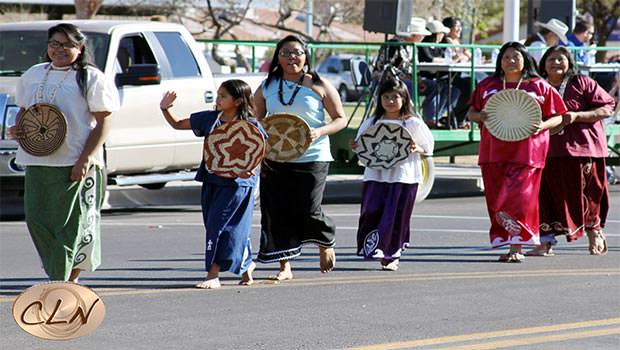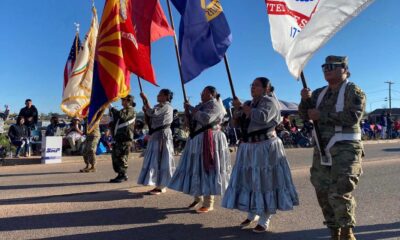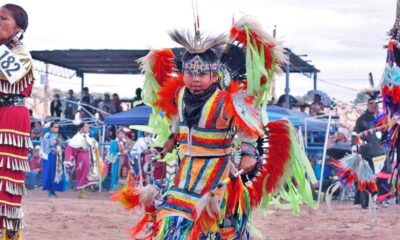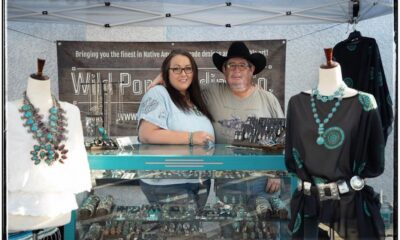History of Tohono O'odham basketry and the art of coiled weaving in Ak-Chin
CLN visited the Ak-Chin Him-Dak EcoMuseum & Archives to learn about the art of coiled weaving and the traditions and culture of Tohono O’odham basketry in 2014.
Native American Culture Cowboy Lifestyle Network visited the Ak-Chin Him-Dak EcoMuseum & Archives this year to learn more about the art of coiled weaving as well as the history, traditions and culture of Tohono O’odham basketry.
Cowboy Lifestyle Network visited the Ak-Chin Him-Dak EcoMuseum & Archives this year to learn more about the art of coiled weaving as well as the history, traditions and culture of Tohono O’odham basketry.
The Tohono O’odham (descendants of the Hohokam) are Piman-speaking people from southwestern Arizona and northern Mexico.
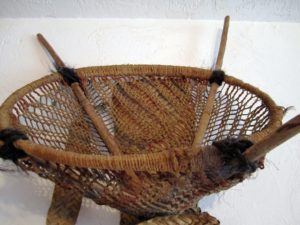
Prehistoric Pima (Papago) Kiaha / Burden Basket
During the beginning of 20th century, decrease in water of the Gila and Salt rivers resulted in fewer plants for the materials for Pima baskets. Therefore, Pima basketry and production declined dramatically.
As a matter of fact, Tohono O’odham baskets were once very similar to Pima basketry, but they now differ from one another as they are now made for sale. Today, O’odham basketry is highly renowned as people from all around the world search to purchase these beautiful durable coil baskets from the Ak-Chin Indian Community.
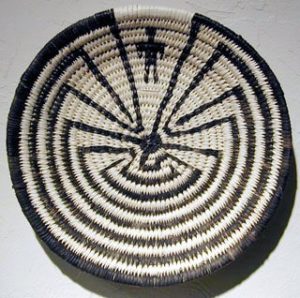 Coiled weaving is the most commonly used method by traditional Ak-Chin O’odham basket weavers. Ak-Chin keeps a permanent baskets exhibit at the Ak-Chin Him-Dak EcoMuseum & Archives, displaying baskets, history of basket weaving and all the materials that make up the baskets.
Coiled weaving is the most commonly used method by traditional Ak-Chin O’odham basket weavers. Ak-Chin keeps a permanent baskets exhibit at the Ak-Chin Him-Dak EcoMuseum & Archives, displaying baskets, history of basket weaving and all the materials that make up the baskets.Including, Mo’ or “bear grass”, which is the inner core of the basket and is added later on in the basket weaving process. Takwi or “yucca” is the material used in the basket weaving process and is used for the white portion of the basket. Furthermore, Yucca fiber coiled over a bear grass foundation has been predominant since the 1930s.
 Then once you start getting into the design aspect of basket weaving, you begin to add Ihug or “devil’s claw” which is used for the black part of the basket.
Then once you start getting into the design aspect of basket weaving, you begin to add Ihug or “devil’s claw” which is used for the black part of the basket.Although the yucca plant and bear grass does not come from this area, you certainly can find plenty of the devils claw growing wild throughout the Ak-Chin reservation.
In fact, many make a pilgrimage from Ak-Chin to the Wilcox area to gather all of their material for their baskets. They often search for the green root and the red root that comes from the banana root.
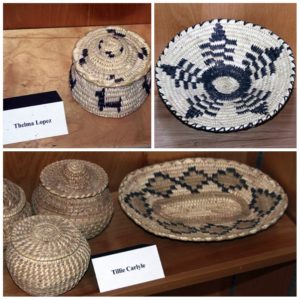 In addition, Ak-Chin weavers make all kinds of different accessories with these materials including earrings, hair holders, barrettes and other items. Oftentimes, they will even use horsehair as a main material in the weaving process.
In addition, Ak-Chin weavers make all kinds of different accessories with these materials including earrings, hair holders, barrettes and other items. Oftentimes, they will even use horsehair as a main material in the weaving process.There are still a few basket makers still living in the Ak-Chin Indian Community. Including elders, Sally Antone, Tillie Carlyle, Thelma Lopez and Armida Mattia, who have some of their baskets displayed at the Ak-Chin Him-Dak EcoMuseum & Archives.
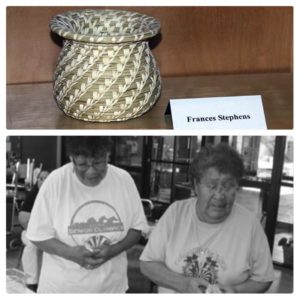
Ak-Chin Indian Community Elders Jenny Holsen (Left) and Frances Stephens (Right)
Another is Frances Stephens who is also one of the Ak-Chin elders; in fact, Frances has taught basket weaving classes that Ak-Chin has for both children and adults.
Ak-Chin Indian Community also has a language class and the language program even has developed an app in for smart phones and tablets in the App Store. As technology advancements progress every year, Ak-Chin Indian Community works extremely hard to be on top of all the cutting edge technology so that traditions are kept alive and people remain engaged within the Community.
The Western world would like to thank the Ak-Chin Indian Community for keeping O’odham basketry intact into Native American culture and the art of coiled basket weaving alive and well.
Thanks for visiting Cowboy Lifestyle Network, stay tuned for more exclusive Ak-Chin Indian Community articles, photos, videos and more!
Last Updated on 01/25/2019 by Aaron Kuhl
CLN Community & Event Sponsor
